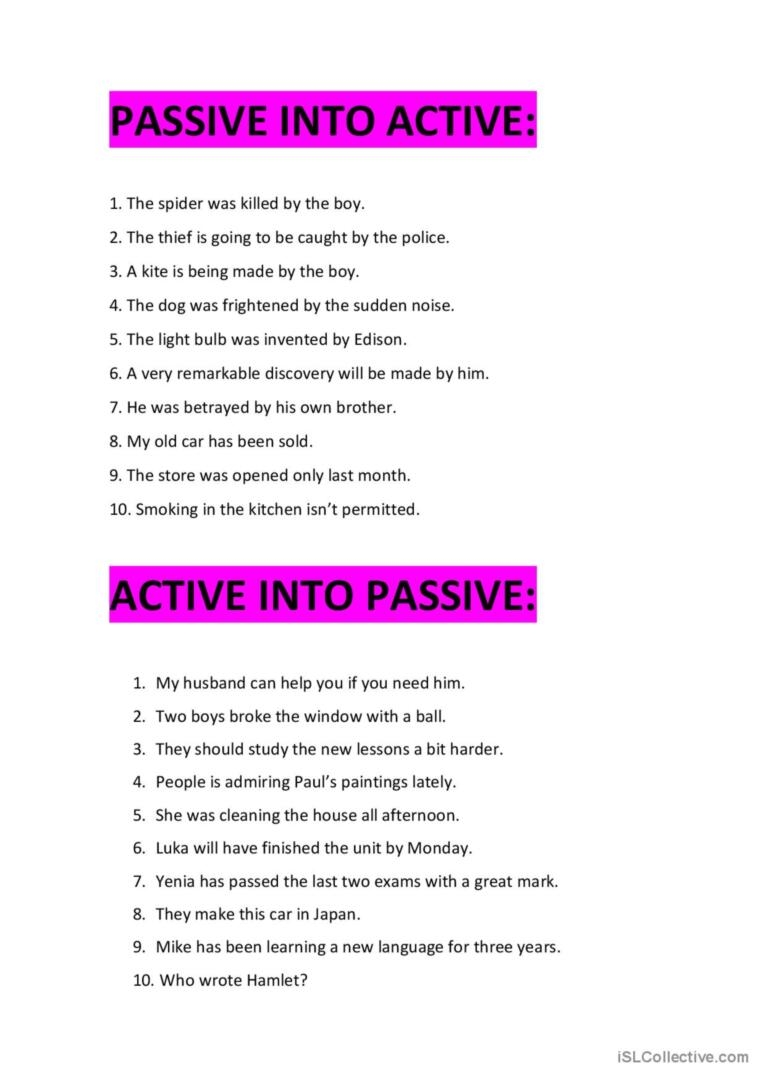In English grammar, the passive voice is a construction in which the subject of a sentence is the recipient of the action rather than the doer. It is formed by using a form of the verb “to be” followed by the past participle of the main verb. Passive voice is used when the focus is on the action rather than the doer of the action. It is also commonly used in formal writing or when the doer of the action is unknown or unimportant.
Practicing exercises on passive voice can help learners understand how to form and use passive constructions correctly. By doing exercises, learners can become more familiar with the structure of passive sentences and improve their overall understanding of English grammar.
Here are some exercises to practice using the passive voice:
- Rewrite the following sentences in the passive voice:
- She paints the house every summer.
- The teacher will give you the instructions.
- They have already finished the project.
- Fill in the blanks with the correct passive form of the verbs given:
- The cake _______ (bake) by my sister.
- These books _______ (read) by millions of people.
- The new highway _______ (construct) by the government.
- Change the following active voice sentences into passive voice:
- The dog chased the cat.
- She will finish the report tomorrow.
- They are repairing the car now.
By regularly practicing exercises like these, learners can gain confidence in using the passive voice correctly in their writing and speaking. It is important to understand when and how to use the passive voice in order to communicate effectively in English.
Overall, exercises on passive voice are a valuable tool for learners to improve their English grammar skills. By practicing and mastering the use of passive constructions, learners can enhance their language proficiency and effectively communicate in both written and spoken English.
